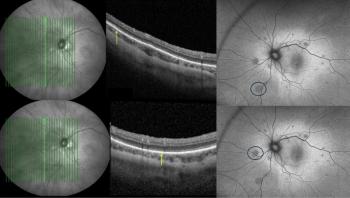
Retinal microvascular changes may not predict short-term ischaemic insults
Retinal changes seen in suspected transient ischaemic attacks are not helpful for predicting ischaemic events.
Reviewed by Dr Valérie Biousse.
About a quarter to half a million people in the United States have a transient ischaemic attack (TIA) annually. Of these, approximately 10% are estimated to go on to have a stroke during the subsequent 90 days.
A cohort study was undertaken (FOTO-TIA) to determine whether retinal microvascular findings were helpful for predicting strokes and cardiovascular events in patients who presented with a suspected TIA. The first author of the study, Dr Valérie Biousse, professor of neuro-ophthalmology at the Emory Eye Center in Atlanta, Georgia, United States, reported that the retinal changes seen in patients with suspected TIAs in the emergency department do not improve the ability to predict future ischaemic events (i.e., stroke and cardiovascular events) during the ensuing 90 days. This is despite the fact that retinal microvascular findings are independent risk factors that differentiate TIAs and strokes from mimics.
Retinal microvascular study outline
Adults with a National Institutes of Health Stroke Scale score of three or less were admitted for observation to three emergency departments for an accelerated diagnostic protocol for a suspected TIA or stroke. Non-mydriatic fundus photographs were obtained prospectively for all patients and reviewed for retinal microvascular findings, which included retinal haemorrhages; cotton wool spots; retinal emboli/occlusions; hard exudates; or microaneurysms.
The investigators noted that, of the 395 study patients (median age 57 years; 55% women; 64% Black), 34 (9%) had retinal microvascular findings. A total of 154 patients completed the 90-day follow-up evaluation. Within this time frame, three (0.8%) of the 395 patients had a stroke, three (0.8%) had a recurrent TIA and none had a cardiovascular event.
“All the patients who had a stroke or recurrent TIA had an ABCD2 score over three, compared with 70% of the other patients (P = 0.25),” Dr Biousse said. (The ABCD2 score is a tool to improve the ability to predict the risk of short-term stroke after a TIA.) Importantly, none of the patients who had a stroke or recurrent TIA had microvascular findings, compared with the 9% of patients who already had microvascular findings (P = 0.59).
The investigators concluded that this study did not show any evidence that retinal microvascular findings in patients with suspected TIA in the emergency department would improve the short-term predictability of future ischaemic events. They pointed out that the study was underpowered because the incidence of short-term stroke was much lower than they had anticipated. They credit this largely to the improved accelerated diagnostic protocol among the patients.
Valérie Biousse, MD
E: [email protected]
This article is adapted from Dr Biousse’s presentation at the American Academy of Ophthalmology 2021 annual meeting in New Orleans, Louisiana, US. Dr Biousse has no financial interest in this subject matter.
Newsletter
Get the essential updates shaping the future of pharma manufacturing and compliance—subscribe today to Pharmaceutical Technology and never miss a breakthrough.













































